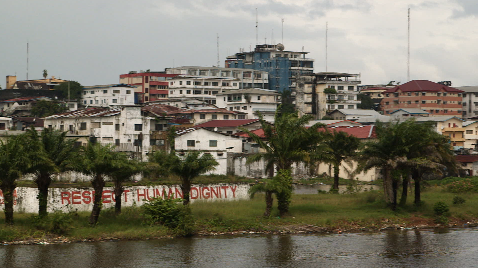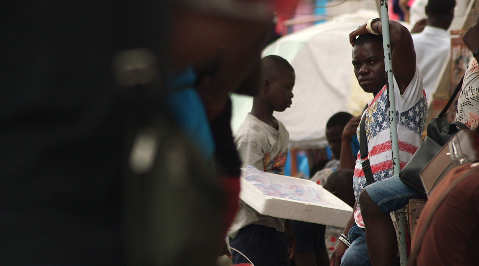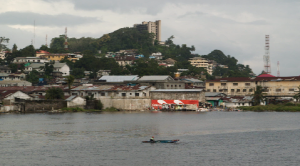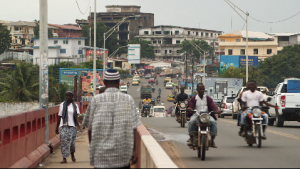Clare and I are back in Monrovia briefly before going upcountry to see Andy again. Every time I’m here I see some change, but I’m not sure if much is actually different or it’s my own eyes that are changing. Maybe I see this place clearer each time.
I’ve been in a lot of capital cities around the world, but Monrovia is special. And not just because Americans have a historical, political and arguably ethical connection to the people here. They are either descendants of African-Americans who came here in the mid-1800s in a colonization movement or the descendants of those that were colonized with the aid of our country. There are signs of Liberians’ reverence of the U.S. everywhere.
But, really Monrovia is special because it feels like a large village. With less than 1 million people in the whole of the capital area and likely less than 4 million in the entire country, people here just seem to all know one another. Driving around town or walking through Waterside, the city’s massive outdoor market area, my driver Harris Ziama exchanges waves and shouts with nearly everyone, so often that I sometimes don’t see who has greeted him because the person has disappeared like an imagined spectre into the crowd.
For nearly twenty years — most of my young life — it was alternately devastated by what Liberians call World War 1 (when their President Doe was overthrown), held captive by post-war confusion, taken siege in World War II (which eventually led to the flight of Charles Taylor) and resource mis-allocation and gang activity. But now it seems fairly peaceful. Just a work-a-day city where people are trying to hold their government accountable, get an education, develop businesses and raise their families. Strangely, given the unsightly poverty and consistent frustration of the people with my own country, I’m going to miss coming here.





